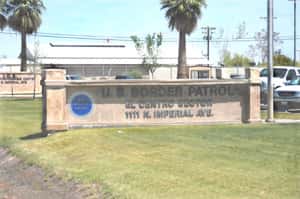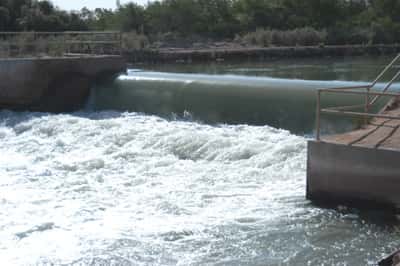Eastern California
California’s border with Mexico is defended by two USBP sectors, San Diego and El Centro.
The El Centro sector is based in El Centro, California, and is responsible for protecting nearly as much land as the country of Belgium. El Centro sector covers both Riverside and Imperial counties of California. It has Border Patrol stations in the border city of Calexico and in the county seat of El Centro some ten miles to the north. It also has two more distant stations, one in Riverside, California, and another in the very small hamlet of Indio.

In addition to the USBP sector headquarters, the Immigration and Customs operates an immigrant holding facility adjacent to the older 1111 North Imperial Avenue USBP site.
This part of the California border area is desert and agricultural land. Thanks to the Imperial Irrigation District canal, billions of gallons of water are available to turn the desert into verdant farmland.
The border itself includes very mountainous terrain as well as flat desert and a major waterway — the IID canal.
The canal acts as a substantial physical barrier to illegal entry into the United States. While there are even 3,000 miles of canals and feeder canals in the IID system, for about 81 miles the main supply canal slowly meanders from the eastern California state line abutting Arizona state line at Yuma, Arizona and to the west and beyond the city of El Centro.
The canal is nearly impossible to cross. While the currents seem not that swift, in fact the water moves about as fast as a man can run. The water temperature offers traumatic chilling to the human body and so falling down the steep sides of the canal into the water means a very difficult — if impossible — exit.
The temperature of the water in the canal causes the rescue personnel great difficulties. In warmer water, a drowning victim will sink and then as the gasses of putrifaction begin to build, the body will rise to the surface. The body floats like a balloon.
Cold water slows the process of putrifaction and so bodies can remain hidden from view for weeks. Often the victims will finally be pushed downstream some miles and into the steel protective grates. There it will be discovered and retrieved.
Here is one of the massive gates releasing billions of gallons of fresh water into the farm fields of the Imperial Valley basin.

